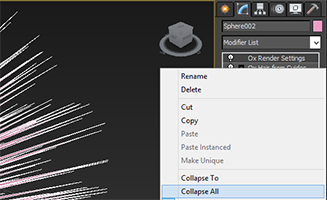 Baked Hair
Baked Hair
This object serves the same purpose for dense hair as baked guides does for guides. It contains two hair representations: sparse and dense. Sparse hair is what you see inside the viewport. Dense hair is what will appear during rendering. You can see the total number of strands in each representation in the edit panel of this object. Using baked hair is usually not very practical since you lose procedural control over the hair. However, if you are exporting or importing hair it can be very useful.
Creating Baked Hair

To create a new baked hair object first create your hair object using traditional means. Then, inside the modifier stack, use the "Collapse All" option to bake the hair. You may then use this baked hair with the same distribution mesh or project it onto a different mesh using the ground strands modifier.
Parameters
Parameters of this component are identical to those found in baked guides. Please refer to that documentation for reference.
Alembic Source Files
You can reference up to 5 different Alembic cache files into a baked object. The hairs from these files will be merged together into a single hair object. The files will be referenced and the hair will not be stored with the scene. Therefore, if the referenced Alembic files are deleted you will also lose the hair in the Baked Hair object.
File 1-5
Use these fields to specify one or more Alembic (.abc) files to reference.
Reload Hair from Files
Pressing this button will reload the hair from reference files.
Grounding
The baked hair, whether a part of the current scene or loaded from an external file, can be directly grounded to a base distribution mesh. This will attach all of the hairs to a mesh of your choosing inside the scene.
To ground the hair, set the Distribution Object parameter to the distribution surface you want, and the uncheck the Detach Roots button. You can set the grounding parameters and the Position Blend Curve to achieve your desired shape. The parameters are the same as the Ground Strands modifier.
C++ SDK Access
This object is accessible via Ornatrix C++ SDK. You need to get an instance of BakedHairObjectFPInterface which exposes numerous methods:
#include "BakedHairObjectFPInterface.h"
// Get Surface Comb interface
auto bakedHair = BakedHairObjectFPInterface::GetInterface( myObject );MaxScript Access
Get access to the underlying hair object which can be manipulated and edited using the MaxScript Hair Interface:
myHair = bakedHairObject.GetHair()
myHair.SetNumRoots 50

